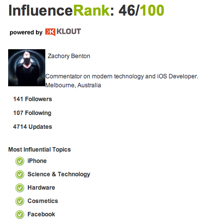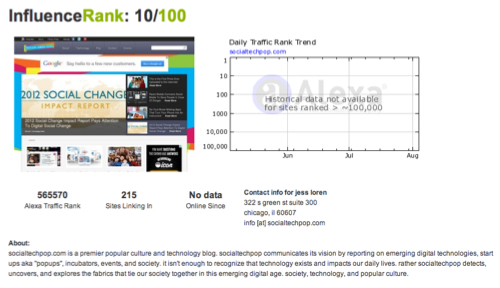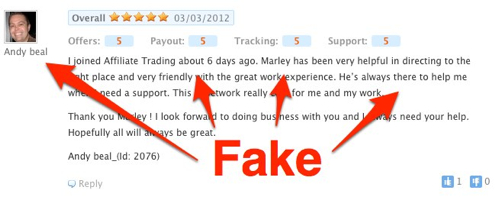[Sponsored Post: Trackur is an online reputation management and social media monitoring tool. This post is from Andy Beal, CEO of Trackur.]
When it comes to social media monitoring, I’m going to assume that you’re already monitoring your brand name, the names of your key executives, and, perhaps, your most important products. If not, you do not have permission to read the remainder of this article, until you have these set up at Google Alerts, or your favorite social media monitoring tool. 😉
OK, for the rest of us, I want to show you 5 clever ways of using social media monitoring that you’ve probably not considered.
1. Find your industry influencers
 As a reader of TopRank’s Online Marketing Blog, you’re already pretty well versed in many tactics for building your journalist and social media contacts list. I suspect each time you issue a press release, you also send it by email to the biggest name reporters covering your industry. But, are you sending it to the most influential people in your industry?
As a reader of TopRank’s Online Marketing Blog, you’re already pretty well versed in many tactics for building your journalist and social media contacts list. I suspect each time you issue a press release, you also send it by email to the biggest name reporters covering your industry. But, are you sending it to the most influential people in your industry?
Using social media monitoring, you can keep track of not just industry trends and competitor announcements, but you can also start to compile a list of those journalists, bloggers, and analysts that have the most influence in your industry. For example, with Trackur’s InfluenceRank metrics you can quickly determine which bloggers have the biggest audience or which Twitter user has the strongest influence. With that kind of knowledge, you can tailor your media outreach not just to the biggest “name” journalists, but to the ones who are going to help spread your message the most.
2. Build better back links for SEO
Go to any large search engine optimization (SEO) conference and the most discussed topic will be that of link building. Social media monitoring gives you a couple of advantages in your link building efforts.
First, you can monitor for any blogger that’s discussing your industry on a regular basis (see above). With that knowledge, you can reach out to them and seek opportunities for either a standard back link, or offer yourself as a guest writer for their blog. Either way, you’re getting a new link from a site that is highly relevant and highly active in your industry.
Secondly, you can look for opportunities to get a link on a brand new site, before anyone else. For example, Trackur’s InfluenceRank will show you which blogger’s have the least amount of influence and traffic. That would normally be a site you’d avoid–especially for PR purposes. However, it can also mean that the site is brand new. It’s yet to receive any link requests, because it’s under the radar of most SEOs. Submit your press release, guest post, or blatant link request to a virgin site and you’ll find them far more approachable than the superstar blog or news site.

3. Discover new keywords
 When we first launched Trackur, the social media monitoring space was still very much a cottage industry. We (wrongly) assumed that our target users would be searching for “online reputation monitoring” and so that’s what we optimized our SEO efforts towards. However, after weeks of monitoring conversations about our industry and competition, we learned that most potential customers were searching for “social media monitoring” tools, software, dashboards, etc. So we changed our focus.
When we first launched Trackur, the social media monitoring space was still very much a cottage industry. We (wrongly) assumed that our target users would be searching for “online reputation monitoring” and so that’s what we optimized our SEO efforts towards. However, after weeks of monitoring conversations about our industry and competition, we learned that most potential customers were searching for “social media monitoring” tools, software, dashboards, etc. So we changed our focus.
We’re glad that we discovered those important keywords, but it was not easy identifying them. So we decided to provide Trackur customers with an easy way to discover new keywords. Now, in our dashboards, we show frequently discussed keywords that customers are not already monitoring.
4. Kick content scrapers to the curb
If you’ve ever written a blog post or article, you’ll know that it’s a thrill to see it published. You’ll also know that it’s not quite a thrill when you see that same article ripped-off by some scumbag scraper site. Your hard work is now providing AdSense revenue to some cockroach that doesn’t care about simple things like author attribution or linking back to the original source.
With social media monitoring you can take a unique string of text from your article, and monitor for any mentions of it on the internet. Not only is this a great way to see where it’s legitimately syndicated–which is also great for your press release tracking–but you can see where it’s being scraped. Once you’ve identified the scrapers you can decide which type of action you wish to take–leave it be, request a link, or report them to Google.
5. Protect your intellectual property
 Along the some lines, you should be using social media monitoring to watch out for trademark or patent infringement. I have first hand experience with this, having discovered that a new start-up was set to launch in our industry with the word “trackur” in its name. The cheek! Fortunately, I was able to approach them amicably and point out our trademark–as well as the confusion it would generate–so they ended up changing their company’s name.
Along the some lines, you should be using social media monitoring to watch out for trademark or patent infringement. I have first hand experience with this, having discovered that a new start-up was set to launch in our industry with the word “trackur” in its name. The cheek! Fortunately, I was able to approach them amicably and point out our trademark–as well as the confusion it would generate–so they ended up changing their company’s name.
In the same vain, your own personal name should be treated like a trademark. Should someone start impersonating you, it could be very bad for your reputation, unless you nip it in the bud.
So there you have it. Five different uses for social media monitoring that you may not have considered. However, these aren’t the only clever ways to use social media monitoring. I bet you have a few of your own tricks up your sleeve, so please share one or two in the comments below. I’d love to read them!
Author Bio
Andy Beal is the CEO of Trackur, one of the largest social media monitoring services in the world. With plans starting at just $18 a month, Trackur offers audience measurement, sentiment analysis, and influence metrics without the high price or steep learning curve.


